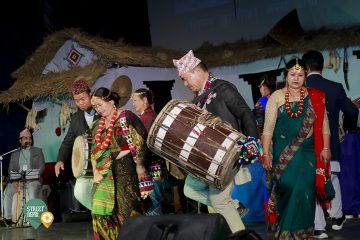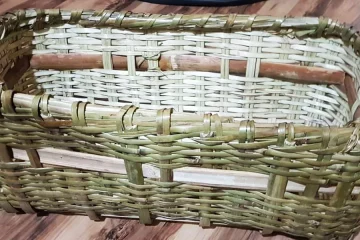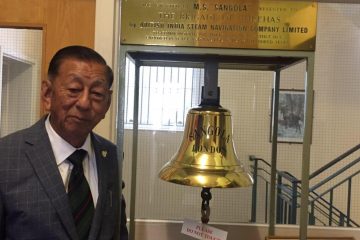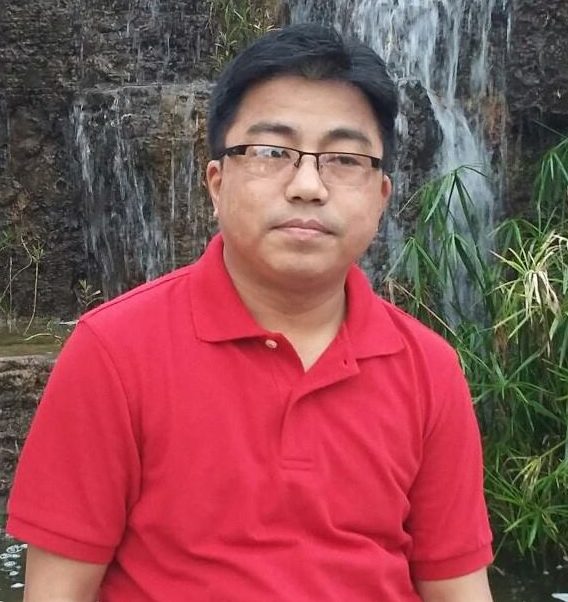
- Bhogendra Lingden
The Limbus and Limbuwan
Limbus are chiefly inhabited in the eastern part of Nepal. Limbus actually refers to the ancient tribe of Nepal that are chiefly inhabited in their own land traditionally known as Pallo Kirant (Far Kirant) that lies east to Arun river and west to India’s West Bengal. Their land is known as Limbuwan which literally means the land of Limbus. Limbus are also known as ‘Kirant’ or ‘Kiranti’. According to the Census Report 2021, the Limbu population in Nepal has reached 4,14,704 which constitutes 1.42 percent of the total population in the country.
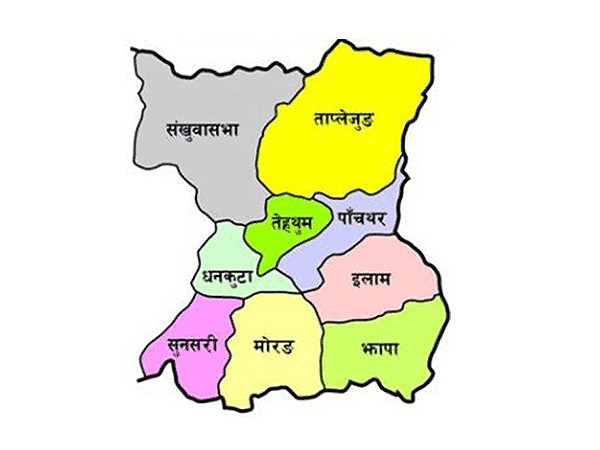
Limbuwan is diverse in geographical and cultural aspects. In Limbu language ‘Limbuwan’ means ‘the land won by bow and arrows’. Many other tribes live here but we find Limbus are in majority. Limbuwan is famous for its natural beauty. The beautiful snow-capped mountains, green hills, rivers and other historical places are noteworthy for their scenic beauty. Agriculture is the main occupation here. Paddy, corn, wheat, millet, potato are mostly grown here. It is especially famous for tea and cardamom production.
Tracing back to the pre-historical age of the beginning of civilization, Limbu scholar Chaitanya Subba claims Limbus as “the descendants of three stocks of earlier Kiratas – a branch coming through the north, known as Lhasagotra, a branch coming through the south or southeast, known as Kashigotra and autochthons known as Khambongba – Lungbongba.”. Still there are Limbus who identify themselves as belonging to either Lhasagotra or Kashigotra. Limbus also claim themselves as Khambongba-Lungbongba i.e. originated in the land of Limbuwan itself.
Their belief of origin of their race in the land of Limbuwan is related with linguistics. According to Bairagi Kaila, the word ‘Limbu’ is believed to be derived from the word “Lingwa” which in Limbu language means self -sprouted. Limbus associate the term with their own origin in the land of Limbuwan. They believe that they originated in the land of Limbuwan. So, they call themselves as the son of the land Limbuwan and deny any claim that they came here from elsewhere. Some scholars believe that the name ‘Limbu’ is not the name chosen by them, rather it is the name given to them by people of other races. It is commonly believed in Limbu community that the word Limbu is derived from ‘Li’ and ‘Abu’; i.e. ‘Li+Abu’ where ‘Li’ means ‘bow’ and ‘Abu’ means ‘shooters’. So, Limbu means bow shooters or archers. Previously the Limbus were hunters, and their main weapon was bows and arrows. So, they were called Limbus and their land which they had won with bows and arrows was obviously come to be known as Limbuwan.
Limbus have a very long history in Nepal. Their history refers back to the era of ancient Nepal. Historical facts tell us that Limbus were among the one who initiated civilization in Nepal. In the Kirat Period, they were the rulers of Nepal. They were known as Kiranti then. Later in the period of Shah dynasty, they were granted special privileges of local authorities in Limbuwan. The name ‘Limbu’ according to Chaitanya Subba is the product of 18th century. He states that historical documents reveal that the term “Limbu” was used by Gorkha administration after 1774”.
Limbus prefer to call themselves ‘Yakthumba’. According to Yehang Lawoti, the term “Yakthumba is derived from ‘Yaktumba’ which means very old or ancient”. It can be further elaborated as: in Limbu language Yak means ‘fort’ or ‘capital’ and Tumba means ‘the elder member or the guardian in the fort’. It is believed that Limbus in ancient times used to live under the guardianship of the eldest member in the fort. Tumba was the head in that Yak (fort). So, they began to call themselves ‘Yaktumba’ which later became ‘Yakthumba’. Another view explains that ‘Yak’ means ‘fort’ and ‘Thumba’ means ‘defender’. So, Yakthumba means the defenders of the fort. They also call themselves ‘Yakthungsa Thibongsa’ which means the son of the eldest one or the son of the ten chieftains. In Limbu language ‘thibong’ means ten and ‘sa’ means son. Historians also point out that in ancient time Limbuwan was won and established by the ten chieftains.
It is remarkable to state that Limbu community has a diverse range of sub-division within it. Within Limbus, there are variations in their sub-clans which is known as ‘thar’. Studies have shown that there are nearly 300 sub-clans (thars) of Limbus. Some of them are Wanem, Lawoti, Chonbang, Maden, Pandhak, Lingden, Sereng, Angdembe, Khewa, Kandangwa, Chemjong etc. Limbus are still known as ‘Subba’ which is a political term. In the past, Subbas were privileged with certain rights and responsibilities. Subbas owned a piece of revenue free land which was known as “Kipat”. It was a local administrative body of Nepal government in Limbuwan. This political system was abolished in 1962 A.D. Still many Limbus are using the term ‘Subba’ as their sub-clan or ‘thar’.
The land of Limbuwan includes the area east of the Arun River extending to Nepal’s eastern border with India’s West Bengal. The area of Limbuwan covers the area between the Arun river in the west, the border with Sikkim and west Bengal of India in the east, the northern parts of the plains of Morang, Sunsari and Jhapa in the south, the border with the Tibet, China in the north. Researcher Shiva Kumar Shrestha believes that Limbuwan was known as Phedap before the arrival of ten Limbu kings, which now refers to the six districts including Dhankuta, Terahtum, Sankhuwashabha, Taplejung, Panchthar, and Ilam.
The Limbu Language and Literature
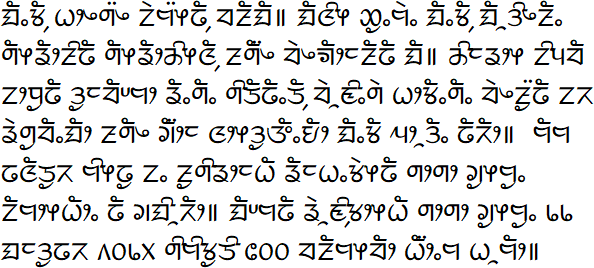
As one of the distinct indigenous nationalities, Limbus have their own language, script, and literature. Limbus call their language ‘Yakthumpan’. Limbu language is very old, probably as old as their origin. Bairagi Kaila believes that Limbu language is a member of Tibeto-Burman linguistic group. Limbu script was developed from Brahmhi Script after sixth century A. D. According to the Census Report 2021, the population using Limbu language as their mother tongue has reached 3,50,436 or 1.20 percentage of the total population. Limbu language is one of the major spoken and written languages of Nepal.
Limbu language has well developed and standard alphabet which consists of 10 vowels and 25 consonant characters. Most of the Limbus in Limbuwan area speak in Limbu language as their mother tongue. It is a chief lingua franca in eastern Nepal. Limbu language is written in ‘Sirijanga’ script. It is named after King Sirijanga who developed this script and taught the Limbus the art of writing by inventing a kind of character in late 9th century A.D. It managed to survive for some hundred years after the death of King Sirijanga. It has been widely believed that the ancient Limbu script was preserved and revived later by Tye-Angsi Sirijanga Sing Thebe Limbu who was born in Tellok Kuchintar (Yangwarok area) in Limbuwan, eastern Nepal in 1704. Thus, the script is named as Sirijanga script in the honour of these two legendary historical figures. With the help of his newly revived script, Sirijanga collected, composed, and compiled Mundhum and philosophical teaching for Limbus. His Mundhum compilations and philosophical teachings were later recollected and recompiled by British scholar Brian Hudson. Hudson had collected Mundhum from Limbu villages of eastern Nepal and Sikkim with the help of many disciples and follower of Sirijanga. His collections, known as Hudson Manuscripts, are preserved in the India Office Library in London University.
Limbu language is rich in vocabulary and dialects. It is an independent language with its own distinctive linguistic features. Limbu language is widely spoken in Taplejung, Panchthar, Ilam, Dhankuta, Terahthum, and Sankhuwasabha. Besides, it is also spoken in many places of Limbu community in Jhapa, Morang and Sunsari districts. Moreover, this language is also spoken by Limbus living outside Nepal in Bhutan and Assam, Nagaland, Sikkim and other parts of India. According to Dr. Chatanya Subba, there are four major dialects of Limbu language. They are: Panchthare dialect, Tamarkhola dialect, Phedape dialect and Chhatthare dialect. Panchthare dialect is spoken in Panchthar and Ilam districts. Tamarkhola dialect is spoken in most of the parts of Taplejung district whereas Phedape dialect is spoken mainly in the northeast part of Tehrathum district. Chathare dialect is spoken in the southwest part of Terahthum district.
There are many books written in Limbu language and Sirijanga script. But it is still in infancy stage as it was not encouraged in the past. The enthusiasts of Limbu language and literature were discouraged until the recent years. It was banned frequently in the past. Despite such hardships, the Limbu scholars like historicist Iman Singh Chemjong, Limbu priest and social reformers Falgunanda Lingden, Lalshwor Sendang, Bairagi Kaila and others have contributed greatly to develop Limbu language and literature. Now, many books of folk literature, poetry, novel, story, biography, one act play and plays, journals and newspapers have been published in and outside Nepal. Limbu language and literature is taught up to university level in Sikkim.
Limbu Religion
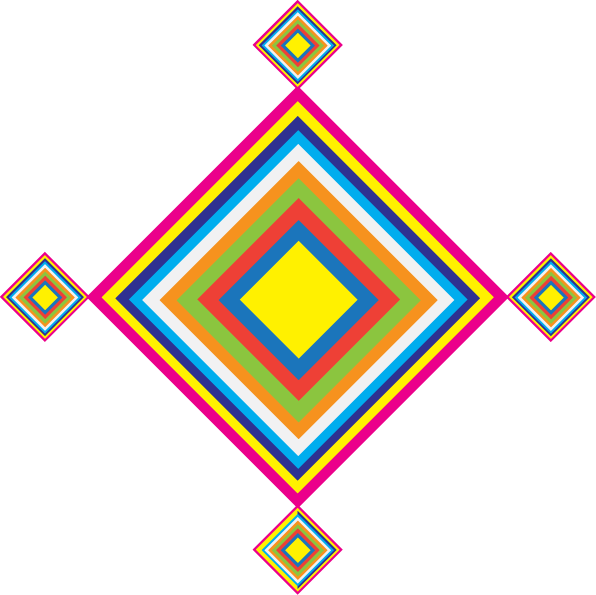
Limbus observe a traditional animistic religion. This is one of the oldest religions of the world. There is no distinct and commonly agreed term for Limbu religion. They worship Supreme Goddess Tagera Ningwaphuma and many other mountain and river deities. Tagera Ningwaphumang/Tagera Ningwaphuma is the supreme Goddess of Limbu Community portrayed as omnipresent, omnipotent, and omniscient. She is often described as the formless, invisible, all-knowing and all powerful. They also worship the forest (sing), stone (lung) and soil (khang) deities twice a year. Some of their gods are offered animal sacrifice in special occasions. They believe that every object of nature inclusive of human beings, has souls. So, they do not worship temple, mosque or monastery: they do not worship idols. Rather they worship various powers and manifestations of nature such as the sun, moon, sky, fire, earth, river, hills and hillocks etc. It emphasizes the purity and holiness of one’s soul and stresses that we must have a holy heart and a holy home to make this material world pure and holy.
Mundhum is the ancient religious scripture and folk literature of Limbu community. Mundhum is the core of Limbu civilization. Limbu community take it as the Holy Scripture recited by Limbu shamans known as phedangma, samba, yeba (male), and yema (female) during the performance of various rituals. Mundhum has been preserved and transferred orally from generations to generations through the oral recitation by Limbu shamans. It provides a philosophical base of knowledge and wisdom in Limbu community that guides their thoughts and behaviours in every sphere of social life.
Mundhum is an indispensable instrument for every social and cultural occasion, all rituals, and ceremonies in Limbu community. Various rituals practised in Limbu community like Manggenna (Ritual of warding off evil influences), Nahangma (Ritual for revitalizing family chief), Tongsing Takma (Observing Tongsing ritual), Sappok Chomen (Ritual for safe delivery of a child), Yangdang Phongma (Naming ceremony), Mekkhim Chokma (Wedding ceremony), Khauma (Death rites) etc. are performed with Mundhum. Limbus’ religion, and customs, and life rituals are guided by Mundhum. Mundhum is recited, chanted and narrated along with music of bells, drums, brass plates etc. by Limbu shamans during the performances of rituals.
Many Limbus have named this religion Yumaism. Yumaism derives its name from Goddess Yuma, whom many consider as another manifestation of Supreme Goddess Tagera Ningwaphuma. Yuma or Yuma Sammang one of the most worshiped, most revered prime deities of Limbu community worshiped on all occasions.
Limbus are also followers of the path of ‘Satyahangma’ initiated and developed by the great reformer of Limbu community Falgunanda Lingden in 1930s, during the Rana regime. The followers of this sect also worship every god and goddesses of Yumaism and consider ‘Yuma’ or ‘Tagera Ningwaphuma’ as the supreme power. But they differ in their religious practices and customs. Their ritual practices have been influenced by Hinduism. They avoid animal sacrifice in their religion. Many Limbu scholars consider the path of Satyahangma sect is not the original culture and religion of Limbus. They believe that it can’t preserve the originality of Limbus’ unique culture and religion.
Limbus have also been identified as the followers of the Kirat religion that incorporates a wide variety of indigenous tribal communities of Nepal including Rai, Limbu, Yakkha, Sunuwar, Thami, Jirel, Hayu and Surel tribes. Many Limbus have mentioned their religion as ‘Kirat’ in the population census of 2021. According to the Census Report 2021, there are 9,24,204 (3.17%) followers of Kirat religion which makes it the fourth largest group in the category of religion after Hinduism, Buddhism and Islam in the country.
Limbu Customs, Festivals and Rituals
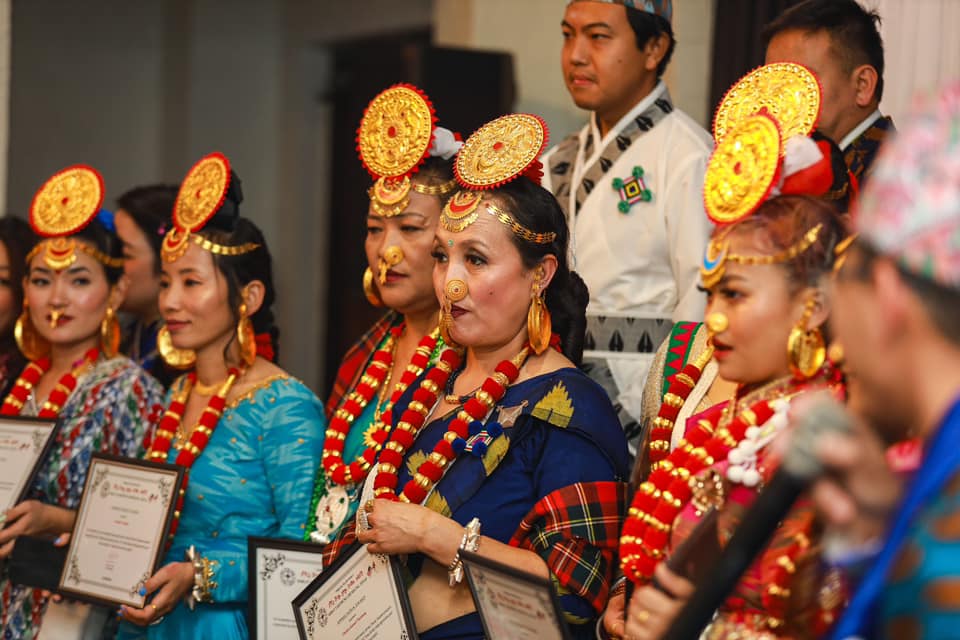
As Limbus worship nature, their festivals are also related to nature. They call festival as Tangnam. They observe different festivals throughout the year. The main festivals they observe are Yakwa Tangnam, Sisekpa Tangnam, Balihang Tangnam, Chasok Tangnam, Kakphekwa Tangnam etc. Yakwa Tangnam is a communal worshiping of land before getting involved in agricultural activities like cultivating the crops, sowing the seeds etc. During Yakwa festival, all the villagers gather together and pray for water or rain, favorable weather and avoidance of accidents or wounds while working and flood and other natural calamities.
Sisekpa Tangnam is observed in the first of Shrawan month. It is observed in night where all the villagers gather together and carry homemade torches and ‘thal’ (plate) and ‘nanglo’ (winnowing basket) and chase away starvation and evil spirits. Balihang Tangnam is observed in Kartik months in for three days. It is a festival of light where Limbus remember their great King Balihang and wish for the happiness and prosperity of each other.
Chasok Tangnam is a festival of gratitude and thanksgiving. After harvesting the yearly crops, Limbu community gather together, and they express their gratitude for gods favour for crop growing and ask for the permission to use and eat that newly harvested crop to the supreme power ‘Tagera Ningwaphumang’.
Kakfekwa Tangnam is observed in the first of Magh month. It is also the New Year’s Day of Limbu. Current Limbu year is running in 5087. They call their year ‘Yele Tangbe’. In this day, they clean their houses, take a bath and worship, and pray to their god Tagera Ningwaphumang and eat yams. Limbus believe that the yams are the first food items that humankind learned to eat. Before eating they offer a certain portion of food to the god ‘Tagera Ningwaphumang’ and their neighbors too.
Limbus observe many dances and they have many musical instruments. The most popular dances are Yalang (paddy dance) and Kelang (drum dance). Their musical instruments are ‘Ke’ (Chyabbrung i.e. long drum like musical instrument), Kom (binayo), Mufro (flute), Tanke (nagara) etc. As one of the distinct indigenous nationalities, Limbus are rich in unique and distinct culture and cultural practices.
Marriage
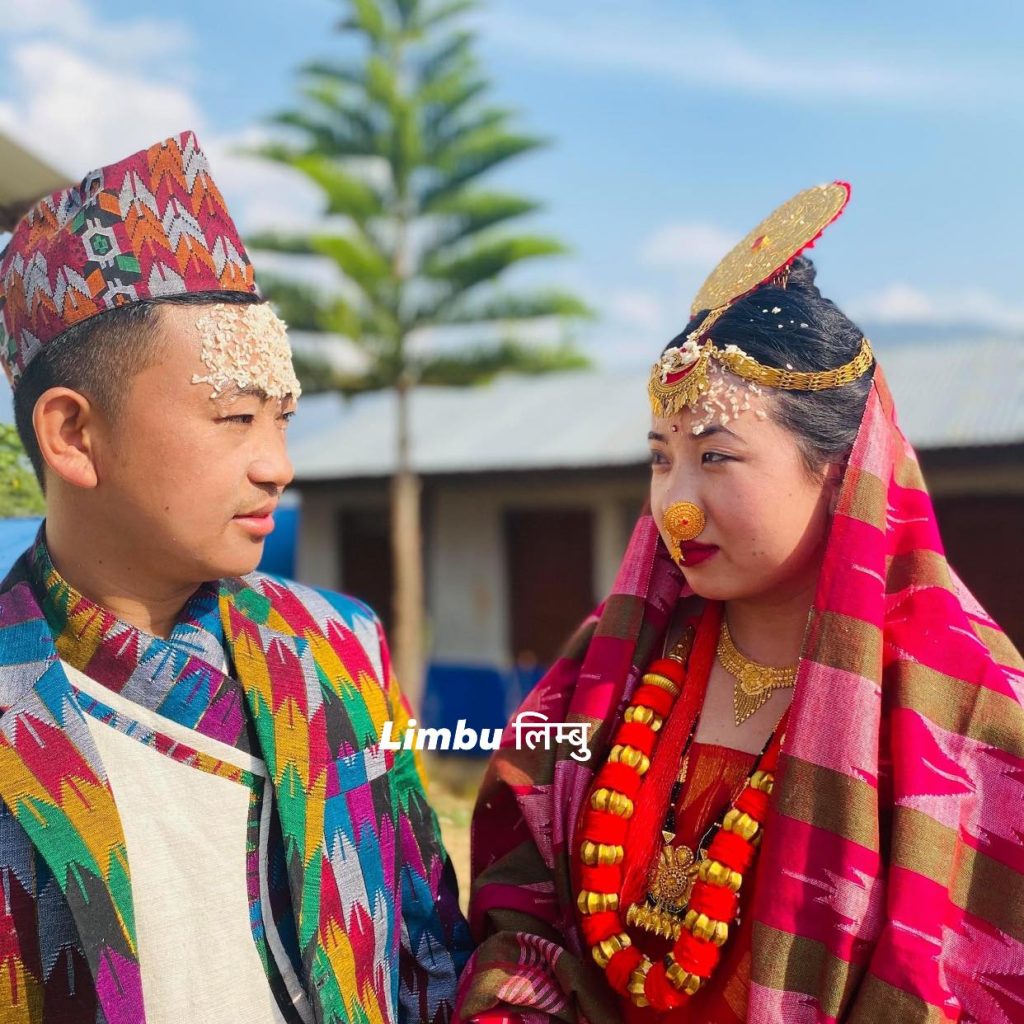
In Limbu community, we find two types of marriage. Both arranged marriage and love marriage or chosen marriage of free choice are prevalent here. Limbus do not marry within same clans or thars. So, the marital relationship within blood tie of at least seven predecessors is prohibited. Arranged marriage is known as “Naksingma Mekkhim” and love marriage is known as “Nanumna Khemma Mekkhim”. In arranged marriage, first of all, bridegroom and his relatives visit the bride’s home with gifts and make a proposal of marriage to the bride’s parents. If the proposal is accepted by the bride’s parents, the date of marriage is fixed. Then the preparation for marriage begins. All the villagers and relatives are invited, and bridegroom’s party makes a procession towards the bride’s house on the fixed day. They bring bride in bridegroom’s home where she is welcomed by bridegroom’s parents. Then the marriage ritual is carried out by Phedangma. The Phedangma makes both of them promise to stay together lifelong. And all the relatives are given feast, offered home-made wine. They enjoy Kelang (Chyabrung dance) and Yalang (Paddy dance).
Love marriage is self-decided marriage where parents of married couple have little role. Love marriage may involve elopement of couples without the prior knowledge or consent of parents. When a Limbu boy and girl like each other and fall in love, they decide to marry with or without consent of their parents. If a Limbu girl elopes with a Limbu boy, the boy takes the girl his home. Then Tuttu Tumyahang (respected members of the community) gather in boy’s home and try to find if there is any blood relation between them. If no blood relation is found, then a short formality of marriage is carried out by Phedangma. Immediately the relatives and villagers are invited and given feast. Later, they also inform the girl’s parents and there too marriage formality is carried out.
Death Rites
When a Limbu dies, his body is sometimes kept for one night before burial. The body is laid out at full length and then washed and cleaned with water poured from the gold. Then clothes are changed, and the dead body is adorned with flowers and a one-rupee coin is put on its forehead. Finally, the dead body is placed into the chethap i.e. a special makeshift bed-like structure and carried to the spot chosen as a grave. The officiating Phedangma is given one rupee with which he is supposed to purchase the land for the grave from the spirits of the place. After the body has been buried, the Phedangma may either keep the money or throw it away, crying out as he does so: ‘This is the money with which we purchased this land’. The grave is dug deep and long, and the body is laid full length in it, the toes pointing to the sky, the hands upon the breast, with the fingers of one hand clasping the fingers of the others.
Mourning period is observed for 3 days if the dead person is female and 4 days for male. At the conclusion of the period of mourning, a feast is held which is attended by the Phedangma and by the mourners and friends. The feast is the final ritual related to the dead person to separate him from the world of living. In the ritual of feast, the phedangmas and the other attendants observe the special rites which are meant to purify the world of living caused by the death of that particular person. The feast ends with the priest calling out to the dead spirit: ‘Go now where your forefathers and foremothers have gone before’.

